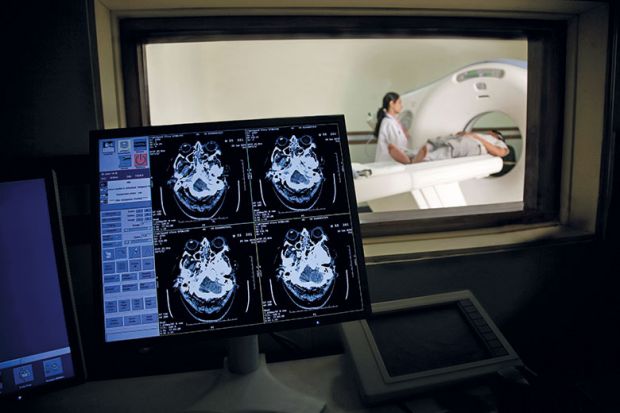University researchers were leading actors in 40 per cent of the top inventions since the 1950s, despite receiving relatively low amounts of research and development funding, according to an analysis.
A study conducted by Steven Brint, distinguished professor of sociology and public policy at the University of California, Riverside, found that universities contributed to almost three-quarters of the world’s most groundbreaking inventions (74 per cent) and were the most important or a very important actor in four in 10 cases.
However, university researchers were generally the second most-involved group, behind corporate researchers, according to the study.
For example, while academic researchers were vital in several important medical discoveries such as polio vaccination and MRI (magnetic resonance imaging) scans, they had less important roles in some of the most groundbreaking technological inventions of the past 50 years such as the personal computer.
The analysis drew on a list of the top 50 inventions between 1955 and 2005, which was published by Popular Mechanics magazine and based on votes by 25 experts from 17 museums and universities across the US.
Register for the 2017 Innovation and Impact Summit in Hong Kong from 31 May - 2 June
Professor Brint, who presented a paper on the analysis at the University of Oxford on 16 May, told Times Higher Education that the contribution of academics was “much higher than would be expected” given the relatively low share of total research and development funding that is awarded to universities in countries that lead in technological innovation.
For example, only 9.1 per cent of the UK’s R&D funding in 2014 went to academics, he said. This figure increases to 14 per cent in the US and 19.8 per cent in Canada, according to Professor Brint.
He also found that in the majority of cases where academics were involved, they took part in all phases of discovery and development, rather than just during the early stages of innovation as might be expected.
Scholars involved in the inventions were in most cases affiliated with a wide range of universities, he added. However, in eight of the discoveries, university researchers were concentrated at the top 50 institutions in the country.
Professor Brint said that he expects that universities will have an even “more important” role in groundbreaking inventions in the future, but added that “public funding will be essential for this trend to continue”.
State funding was instrumental in the discovery and development stages of the majority of the inventions, he said.
“A number of forces are at play in the US to encourage universities to expand their role as engines of economic development. These include programmes in each of the 50 states to encourage technology-based economic development. Many of these programmes provide resources to university researchers,” he added.
Register to continue
Why register?
- Registration is free and only takes a moment
- Once registered, you can read 3 articles a month
- Sign up for our newsletter
Subscribe
Or subscribe for unlimited access to:
- Unlimited access to news, views, insights & reviews
- Digital editions
- Digital access to THE’s university and college rankings analysis
Already registered or a current subscriber? Login







